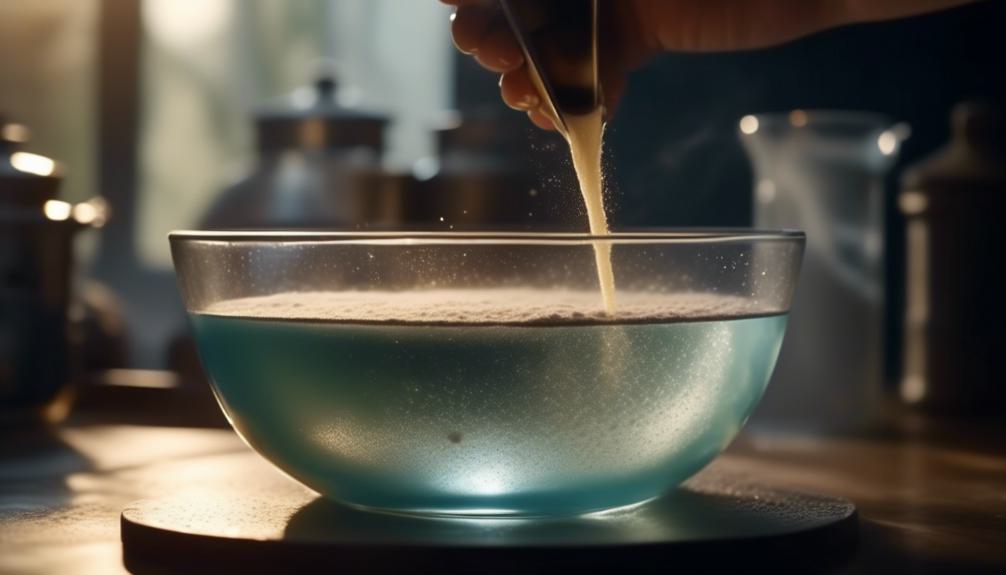Have you ever tried to make gelatin only to have it turn out more like a disappointing puddle than the firm, fruity treat you had in mind? It’s a common experience, but fear not! With a few simple tips and tricks, you can become a gelatin pro in no time.
From choosing the right ingredients to the proper techniques for setting and unmolding, mastering the art of cooking with gelatin is within your reach.
Stick with me, and I’ll guide you through the process step by step, so you can achieve perfect results every time.
Key Takeaways
- Follow recipe instructions precisely to ensure the best results when cooking gelatin.
- Choose the right ingredients, considering fruits that may prevent gelatin from setting properly and adjusting sugar levels for desired texture.
- Properly bloom and dissolve gelatin using the recommended techniques to achieve the desired consistency and structure.
- Follow the proper steps for setting and unmolding gelatin to ensure a smooth and successful experience.
Gelatin Basics
Gelatin is a versatile ingredient that can be used in a wide variety of dishes, both sweet and savory. When using gelatin, it’s essential to follow the recipe’s instructions precisely. If the recipe calls for gelatin, start by hydrating it. To do this, sprinkle the powdered gelatin over a bowl of cold water and let it sit for a few minutes until it absorbs the water and becomes spongy. Then, heat the hydrated gelatin gently until it becomes a clear liquid.
Always use gelatin in the quantity specified by the recipe. Typically, one packet of powdered gelatin sets about 2 cups of liquid.
It’s important to note that some raw fruits, such as fresh or frozen pineapple, figs, kiwi fruit, guava, and ginger root, contain enzymes that can break down gelatin and prevent it from setting properly. However, canned pineapple and kiwi are safe to use as the enzymes are deactivated in cooked fruit. Additionally, the amount of sugar in the recipe can affect the firmness of the gelatin, so be mindful of the recipe’s instructions.
Gelatin works equally well in desserts and molded salads, adding a delightful texture and structure to the dish.
Choosing the Right Ingredients
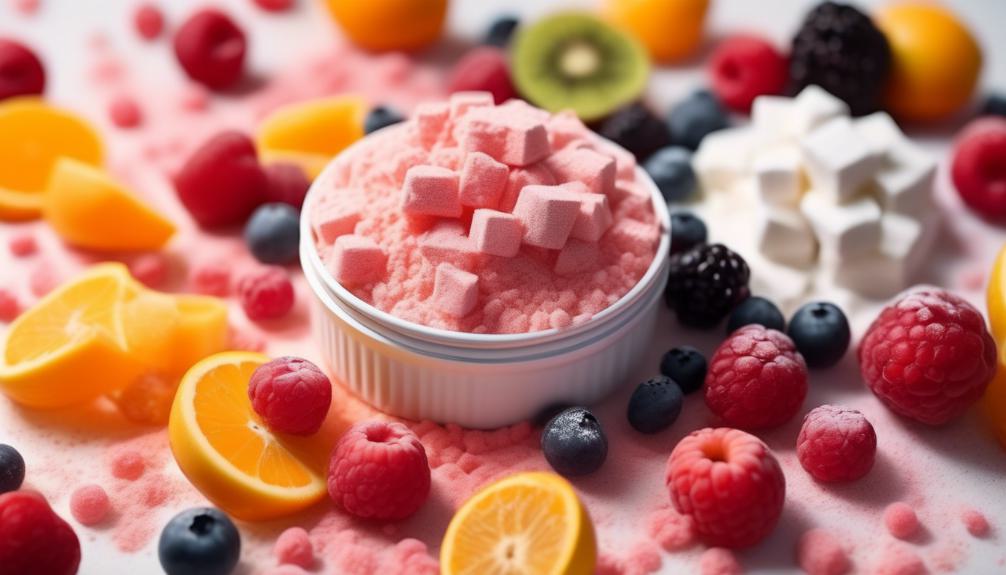
When preparing gelatin dishes, ensuring the proper setting of the gelatin is crucial. It’s important to carefully consider the fruits you incorporate and the amount of sugar used in your recipe.
Here are some tips to help you choose the right ingredients for your gelatin dishes:
- Consider the fruits: Some fruits contain enzymes that can prevent gelatin from setting properly. Avoid using fresh or frozen pineapple, kiwi, papaya, and figs unless they’re cooked first to deactivate the enzymes. Canned versions of these fruits are safe to use as the enzymes are deactivated during the canning process.
- Adjust sugar levels: The amount of sugar in your gelatin recipe can affect the firmness of the gelatin. If you’re using fruits with natural sweetness, you may need to adjust the sugar levels accordingly to achieve the desired texture.
- Choose the right type of gelatin: Whether you use powdered gelatin or sheets of gelatin, it’s important to follow the instructions on the packaging. Typically, one packet of powdered gelatin (about 2 1/4 teaspoons) equals 4 sheets of gelatin. When using powdered gelatin, it should be mixed with a little warm liquid before being added to the recipe.
Proper Bloom and Dissolving Techniques
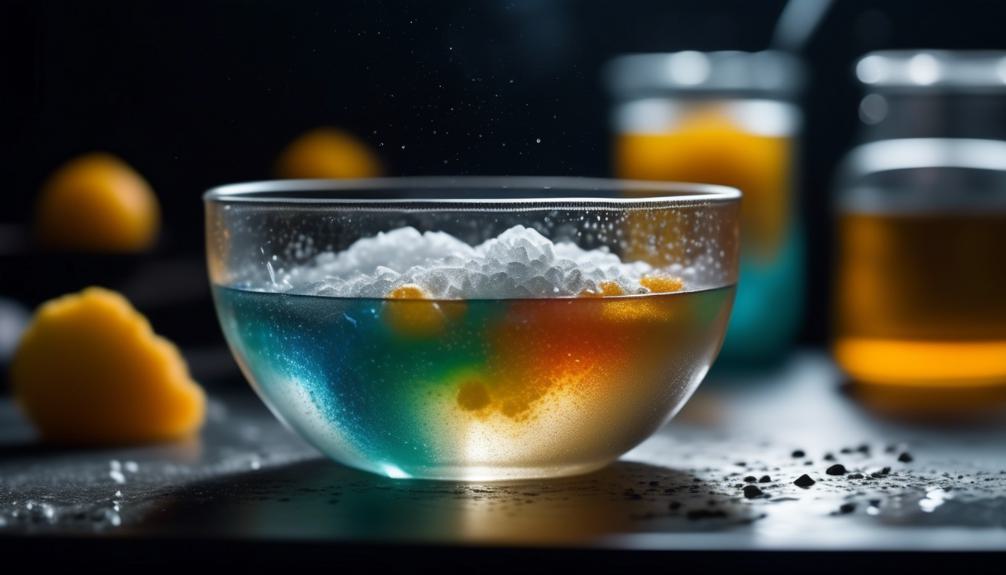
To properly bloom gelatin, sprinkle it on cold water and allow it to sit for 3 to 5 minutes until it reaches a consistency similar to applesauce before adding it to your recipe. This process ensures that the gelatin granules or sheets are properly hydrated and ready to be used in your recipe.
When using sheet gelatin, soak it in cold water for 5 to 10 minutes, wring out the excess water, and then add warm liquid before incorporating it into your recipe. If the gelatin starts to set too much, you can gently heat it to soften it, but be careful not to overheat it, as this can affect its setting properties.
When dissolving gelatin, it’s important to add it to the recipe right away after it’s been softened. Be mindful of the amount of gelatin you use, as too much can result in a rubbery texture, while too little can lead to a lack of structure.
Always dissolve gelatin over low heat and avoid boiling it, as this can affect its ability to set properly. Following these techniques will ensure that your gelatin sets perfectly and contributes to the desired texture of your dish.
Tips for Setting and Unmolding
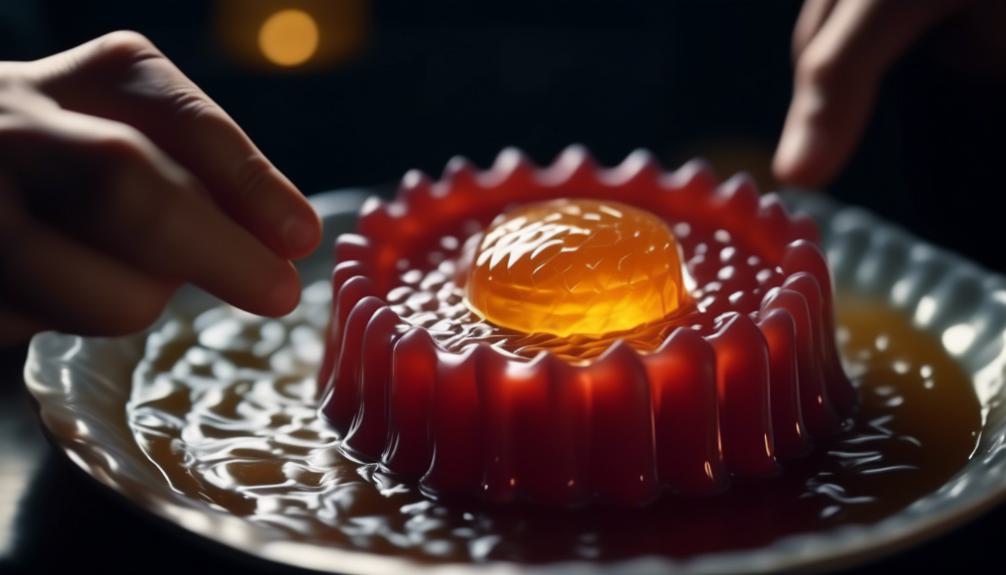
For a smooth and successful gelatin unmolding experience, ensure that the gelatin is fully set before attempting to release it from the mold. Once the gelatin has set, follow these simple tips to ensure a perfect unmolding process:
- Gently run a knife around the edges of the mold to loosen the gelatin.
- If using a metal mold, dip the bottom in hot water for a few seconds to help release the gelatin.
- For silicone molds, simply push on the bottom of each cavity to pop the gelatin out.
Following these steps will help you achieve beautifully molded gelatin without any mishaps.
Additionally, make sure to prevent gelatin packaging from getting damaged to maintain its quality. When using gelatin in a recipe, it’s essential to follow the instructions carefully. For example, if using sheet gelatin, be sure to set 2 cups of water and use sugar to make the gelatin.
Storage and Serving Suggestions
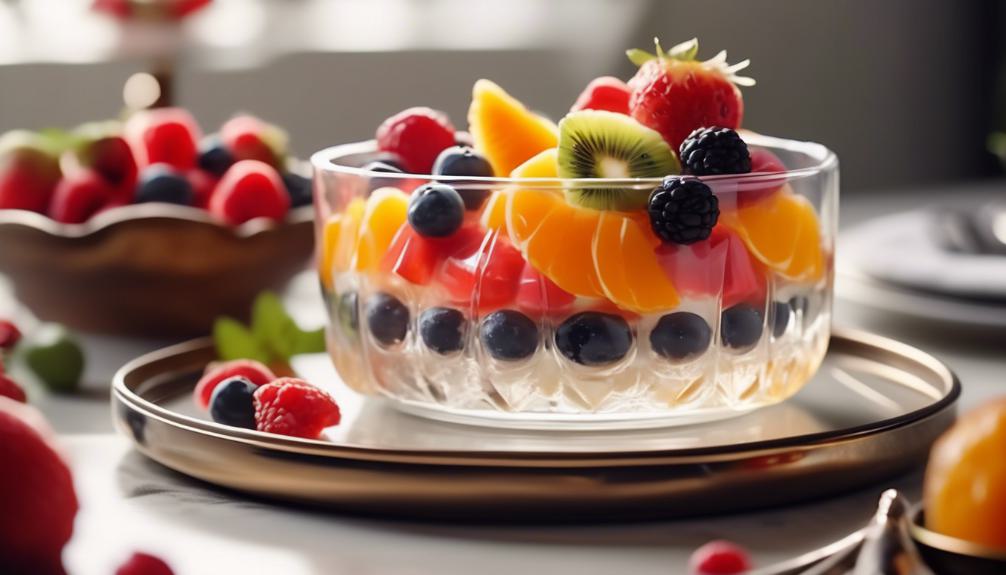
Consider storing gelatin desserts in the refrigerator to maintain their firmness and texture, ensuring the best flavor and consistency when served chilled. This is especially important if the recipe says to serve the gelatin chilled. Make sure to keep the gelatin molds covered in the refrigerator to prevent them from absorbing other food odors. When serving, garnish the gelatin desserts with fresh fruit, whipped cream, or a sprinkle of powdered sugar for an attractive presentation. Additionally, serving gelatin desserts in individual portions can elevate the presentation and make for easy plating.
When it comes to gelatin strength, keep in mind that sweet and savory mixtures and acidic ingredients can affect the setting process. For a vegetarian option or for those who prefer not to use animal-based gelatin, Agar Agar is a suitable alternative. If using powdered gelatin, it’s essential to ensure it’s completely dissolved in the liquid before setting. Also, note that gelatin sets faster in cold environments, so refrigerate promptly after making. If the gelatin sold in your region is different from what the recipe calls for, adjust the water per the package instructions to achieve the desired consistency.
Lastly, consider serving gelatin desserts with a scoop of Ice Cream for a delightful and refreshing combination.
Frequently Asked Questions
How Do You Make Gelatin Effectively?
To make gelatin effectively, start by choosing compatible ingredients and avoiding those that break down gelatin. Experiment with alternative liquids and properly suspend additions. Adjust water and temperature for desired firmness.
How Do You Make Gelatin Dissolve Faster?
To make gelatin dissolve faster, use warm liquid and stir continuously until fully dissolved. Avoid boiling liquids and ensure a smooth consistency. Chilling the mold or container can speed up the setting process.
Do You Have to Heat Gelatin for It to Work?
You don’t have to heat gelatin for it to work, but proper dissolution is crucial for successful results. Blooming gelatin in cold water and adding it to warm liquid helps it dissolve completely before setting.
Do You Mix Gelatin With Hot or Cold Water?
Mix gelatin with cold water, allowing it to sit for 3 to 5 minutes to bloom. Then add it to a warm base, not a cool one, to ensure proper incorporation. Avoid boiling liquids, as this can cause the gelatin to disintegrate.
Conclusion
In conclusion, cooking with gelatin can be a simple and rewarding process when done correctly. By carefully selecting compatible ingredients, properly blooming and dissolving the gelatin, and following tips for setting and unmolding, you can achieve perfect results every time.
Remember to store and serve the gelatin properly to maintain its quality. With these quick and easy tips, you’ll be able to create delicious gelatin dishes with ease.

